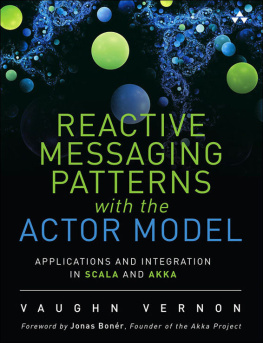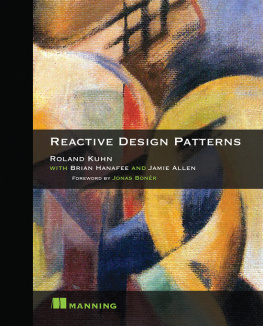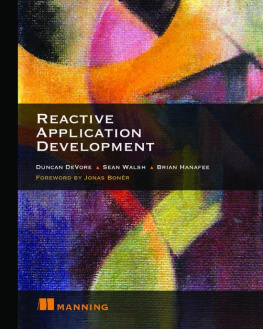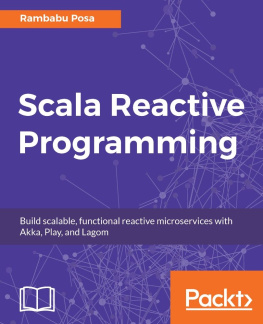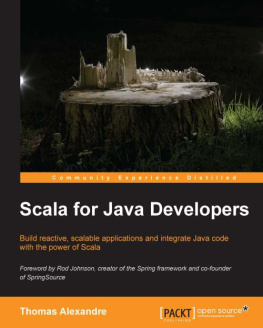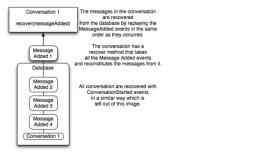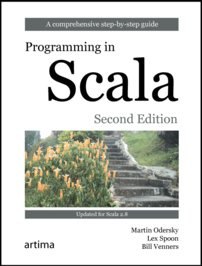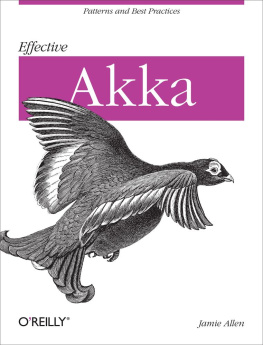Vaughn Vernon - Reactive Messaging Patterns with the Actor Model: Applications and Integration in Scala and Akka
Here you can read online Vaughn Vernon - Reactive Messaging Patterns with the Actor Model: Applications and Integration in Scala and Akka full text of the book (entire story) in english for free. Download pdf and epub, get meaning, cover and reviews about this ebook. year: 2015, publisher: Addison-Wesley Professional, genre: Computer. Description of the work, (preface) as well as reviews are available. Best literature library LitArk.com created for fans of good reading and offers a wide selection of genres:
Romance novel
Science fiction
Adventure
Detective
Science
History
Home and family
Prose
Art
Politics
Computer
Non-fiction
Religion
Business
Children
Humor
Choose a favorite category and find really read worthwhile books. Enjoy immersion in the world of imagination, feel the emotions of the characters or learn something new for yourself, make an fascinating discovery.
- Book:Reactive Messaging Patterns with the Actor Model: Applications and Integration in Scala and Akka
- Author:
- Publisher:Addison-Wesley Professional
- Genre:
- Year:2015
- Rating:3 / 5
- Favourites:Add to favourites
- Your mark:
Reactive Messaging Patterns with the Actor Model: Applications and Integration in Scala and Akka: summary, description and annotation
We offer to read an annotation, description, summary or preface (depends on what the author of the book "Reactive Messaging Patterns with the Actor Model: Applications and Integration in Scala and Akka" wrote himself). If you haven't found the necessary information about the book — write in the comments, we will try to find it.
USE THE ACTOR MODEL TO BUILD SIMPLER SYSTEMS WITH BETTER PERFORMANCE AND SCALABILITY
Enterprise software development has been much more difficult and failure-prone than it needs to be. Now, veteran software engineer and author Vaughn Vernon offers an easier and more rewarding method to succeeding with Actor model. Reactive Messaging Patterns with the Actor Model shows how the reactive enterprise approach, Actor model, Scala, and Akka can help you overcome previous limits of performance and scalability, and skillfully address even the most challenging non-functional requirements.
Reflecting his own cutting-edge work, Vernon shows architects and developers how to translate the longtime promises of Actor model into practical reality. First, he introduces the tenets of reactive software, and shows how the message-driven Actor model addresses all of themmaking it possible to build systems that are more responsive, resilient, and elastic. Next, he presents a practical Scala bootstrap tutorial, a thorough introduction to Akka and Akka Cluster, and a full chapter on maximizing performance and scalability with Scala and Akka.
Building on this foundation, youll learn to apply enterprise application and integration patterns to establish message channels and endpoints; efficiently construct, route, and transform messages; and build robust systems that are simpler and far more successful.
Coverage Includes
- How reactive architecture replaces complexity with simplicity throughout the core, middle, and edges
- The characteristics of actors and actor systems, and how Akka makes them more powerful
- Building systems that perform at scale on one or many computing nodes
- Establishing channel mechanisms, and choosing appropriate channels for each application and integration challenge
- Constructing messages to clearly convey a senders intent in communicating with a receiver
- Implementing a Process Manager for your Domain-Driven Designs
- Decoupling a messages source and destination, and integrating appropriate business logic into its router
- Understanding the transformations a message may experience in applications and integrations
- Implementing persistent actors using Event Sourcing and reactive views using CQRS
Find unique online training on Domain-Driven Design, Scala, Akka, and other software craftsmanship topics using the for{comprehension} website at forcomprehension.com.
Vaughn Vernon: author's other books
Who wrote Reactive Messaging Patterns with the Actor Model: Applications and Integration in Scala and Akka? Find out the surname, the name of the author of the book and a list of all author's works by series.

